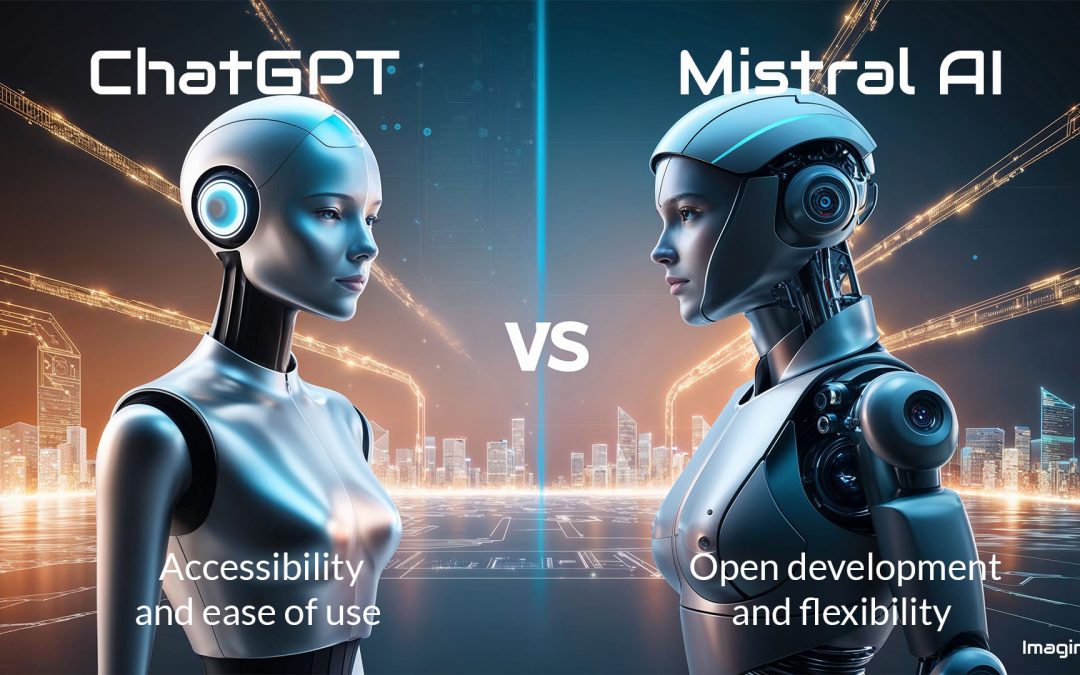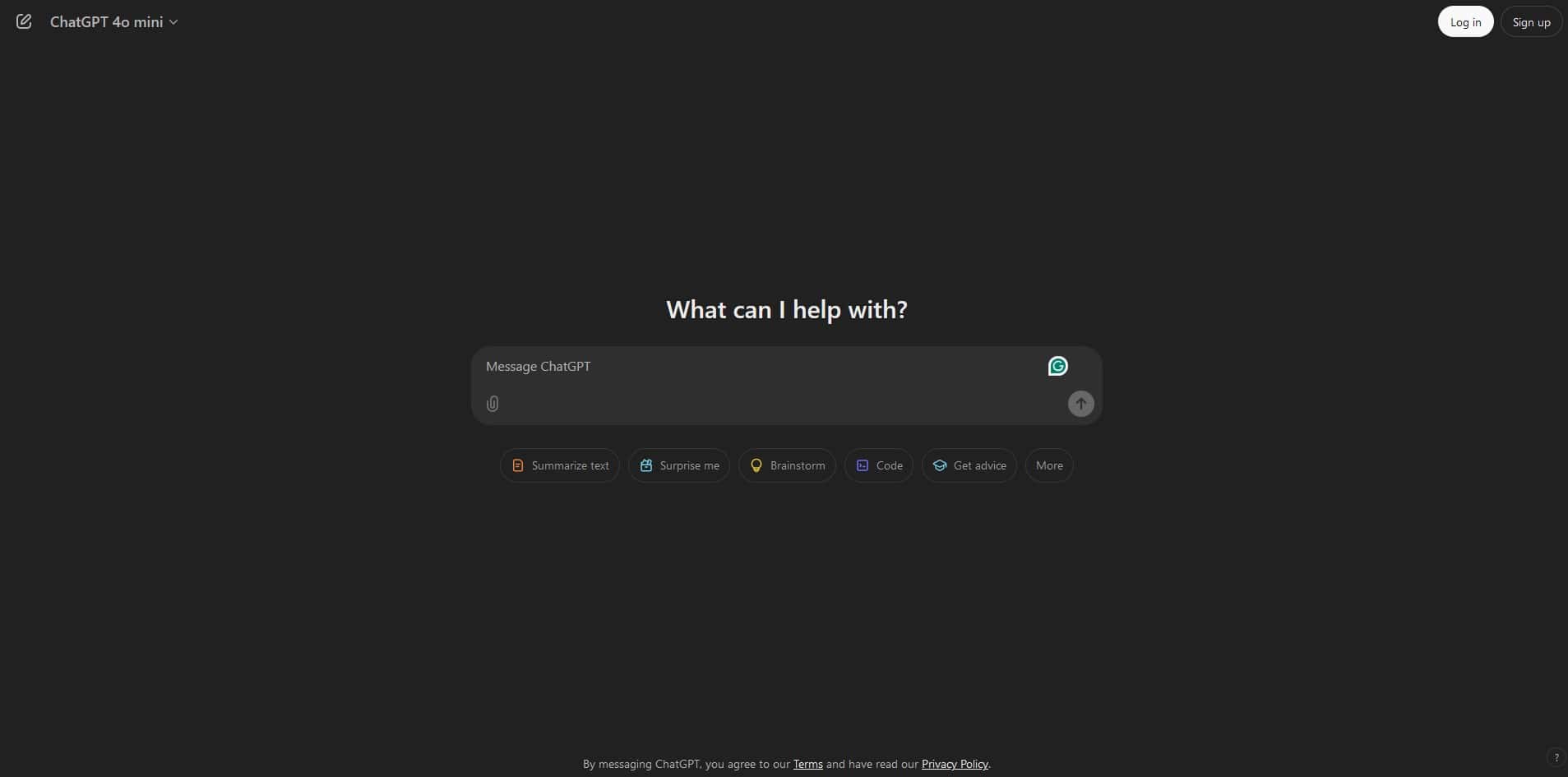This detailed comparison between ChatGPT and Mistral AI is a part of our AI Tools Comparison Series, which explores the best tools shaping the AI landscape.
Introduction – ChatGPT vs Mistral AI
Table of Contents
The AI landscape has evolved significantly, bringing transformative tools that redefine industries.
Among these tools, ChatGPT and Mistral AI have emerged as powerful conversational AI models, each with unique strengths and features.
This article will explore these AI giants’ differences, applications, and potential to help you understand which tool best suits your needs. Let’s dive deep into their functionalities, advantages, and real-world impact.
What is ChatGPT?
ChatGPT, developed by OpenAI, is a conversational AI model based on the Generative Pre-trained Transformer (GPT) architecture.
Its capabilities include:
- Versatile Communication: ChatGPT can draft emails, write essays, code, and more.
- Language Understanding: The model excels in grasping context and generating coherent responses.
- Scalability: It integrates seamlessly into applications like customer support, content creation, and more.
OpenAI continuously updates ChatGPT, with newer versions incorporating advancements in efficiency, context handling, and creativity.
What is Mistral AI?
Mistral AI specializes in creating open-weight models (read more about these models in our Resources ⬇ section), emphasizing flexibility and accessibility.
Some defining aspects of Mistral include:
- Specialized Architecture: Designed for modular applications, Mistral AI models allow customization for various domains.
- Focus on Transparency: Mistral AI champions open-source frameworks, enabling developers to adapt the models freely.
- Performance Optimization: Mistral’s models are built for energy efficiency and high-speed processing.
Mistral’s commitment to open weights makes it an appealing choice for enterprises looking to tailor AI solutions.
ChatGPT vs Mistral AI: Key Comparisons
- Performance
- ChatGPT excels in general-purpose conversational tasks, offering human-like responses.
- Mistral’s models are highly specialized and suitable for specific industry applications.
- Ease of Use
- ChatGPT is user-friendly, with intuitive interfaces and APIs.
- Mistral’s models require technical expertise for customization and deployment.
- Cost
- ChatGPT follows a subscription model with free and premium tiers (e.g., ChatGPT Plus).
- Mistral’s open weights reduce licensing costs but may increase development expenses.
- Adaptability
- ChatGPT is versatile across industries but less flexible for niche customizations.
- Mistral shines in tailored deployments thanks to its open-source approach.
- Community Support
- OpenAI’s ChatGPT has a robust community and extensive documentation.
- Mistral’s open-weight models attract developers seeking collaborative innovation.
Pricing Model Comparison – ChatGPT vs Mistral AI
| Aspect | ChatGPT | Mistral AI |
|---|---|---|
| Base Access | Free (limited version) | Free (model weights) |
| Premium Access | $20/month (Plus Plan) | Not applicable |
| API Costs | Starts at $0.0015/1k tokens | Free but requires infrastructure costs |
| Ease of Use | Ready-to-use interface included | Requires technical setup |
| Customization Costs | Limited customization | Costs for fine-tuning and integration |
| Enterprise Options | Available, tailored pricing | Must be implemented independently |
Which Option is More Cost-Effective?
- For Individual Users: ChatGPT’s “free” and “Plus” plans are more accessible, offering out-of-the-box usability with minimal setup.
- For Developers and Researchers: Mistral AI offers a cost-effective solution, thanks to its open-weight model, particularly for those with the necessary infrastructure and expertise to implement it.
- For Businesses: Enterprises with technical resources may find Mistral’s free model advantageous for large-scale projects, while ChatGPT is more suitable for those seeking a comprehensive, low-maintenance solution.
The pricing comparison between ChatGPT and Mistral AI highlights two fundamentally different approaches.
ChatGPT focuses on ease of use and scalability with predictable pricing, while Mistral AI’s open-weight philosophy offers unparalleled flexibility at the cost of increased implementation complexity.
Choosing between them depends on your budget, technical capabilities, and specific needs.
Use Cases for ChatGPT
- Content Creation: Bloggers and marketers use ChatGPT to generate articles, social media posts, and ad copy.
- Customer Support: Businesses deploy ChatGPT to handle FAQs, complaints, and inquiries.
- Education: Students and educators leverage ChatGPT for learning assistance and resource creation.
Use Cases for Mistral AI
- Industry-Specific Solutions: Ideal for creating AI models tailored to healthcare, finance, or manufacturing.
- Research and Development: Mistral’s open-source approach supports academic and scientific projects.
- Custom AI Applications: Enterprises use Mistral for proprietary software and tools.
❓ FAQs – ChatGPT vs Mistral AI
What are the primary differences between ChatGPT and Mistral?
ChatGPT is versatile and user-friendly, while Mistral focuses on open-source, specialized AI solutions.
Which is better for businesses, ChatGPT or Mistral?
It depends: ChatGPT fits general, multi-purpose tasks; Mistral suits tailored, self-hosted, or domain-specific solutions.
Can ChatGPT be used for coding?
Yes. It can generate snippets, explain code, and help debug typical issues.
Is Mistral suitable for beginners?
Usually not. Mistral’s open models tend to require more technical setup and MLOps know-how.
How secure are these AI models?
Both can be deployed securely; Mistral’s open approach may require extra hardening and governance when self-hosting.
What industries benefit most from Mistral?
Healthcare, finance, manufacturing, and other domains needing on-prem or customized NLP benefit from its flexibility.
Does ChatGPT offer free access?
Yes, there is a limited free tier; advanced features typically need a paid plan.
What is the cost of using Mistral?
Models are open to use, but integration, computing, and customization can add implementation costs.
Which AI model is more energy-efficient?
Mistral emphasizes efficient architectures; actual efficiency depends on model size, hardware, and workload.
Can these models integrate with existing software?
Yes. Both support API-based integrations; Mistral can also be self-hosted for tighter system control.
Conclusion and Summary – ChatGPT vs Mistral AI
ChatGPT and Mistral represent two distinct approaches to conversational AI.
ChatGPT excels in accessibility and general applications, making it an excellent choice for individual users and businesses. On the other hand, Mistral offers unparalleled flexibility and customization, catering to enterprises with specific needs.
ChatGPT and Mistral ultimately depend on your objectives, budget, and technical expertise. Embracing these tools can revolutionize workflows, enhance productivity, and unlock new possibilities in the ever-evolving AI landscape.
📚 Related Posts You May Be Interested In
- ChatGPT vs Bing AI ⬈ – A detailed breakdown of two major AI assistants.
- ChatGPT vs Perplexity ⬈ – Strengths and weaknesses of research-oriented AIs.
Bing AI vs Copilot ⬈ – Microsoft’s two AI approaches in comparison (indirectly related to Mistral through the broader AI ecosystem).
This post is part of the Definitive Guide to Brilliant Emerging Technologies in the 21st Century ⬈, where you can find out more about the topic.
For a brief comparison on the subject, see my previous post, ChatGPT vs. 11 Powerful AI Tools: Unlock Their Unique Features in 2024 ⬈.
Thanks for reading.
Resources – ChatGPT vs Mistral AI
Open-weight Models:
In the context of AI, the term open-weight refers to models whose parameters (weights) are freely accessible to the public. These weights determine how the model processes and generates outputs based on input data.
Mistral AI leverages the open-weight philosophy to democratize access to advanced AI. By focusing on open-weight models, they allow:
- Businesses to create proprietary solutions.
- Academia to push the boundaries of research.
- Developers to experiment and innovate without barriers.
In short, open-weight models like Mistral’s empower those with technical expertise but remain less approachable for the average user unless packaged into more user-friendly solutions.
“We release open-weight models for everyone to customize and deploy where they want it. Our super-efficient model Mistral Nemo is available under Apache 2.0.” – Mistral.ai
- ChatGPT by OpenAI ⬈
- Mistral AI – Frontier AI in your hands ⬈
- Open-source artificial intelligence – Wikipedia ⬈
ℹ️ Note: Due to the ongoing development of applications and websites, the actual appearance of the websites shown may differ from the images displayed here.
The cover image was created using Leonardo AI ⬈.



